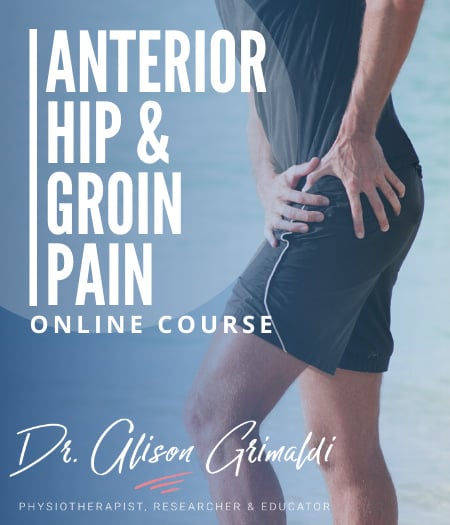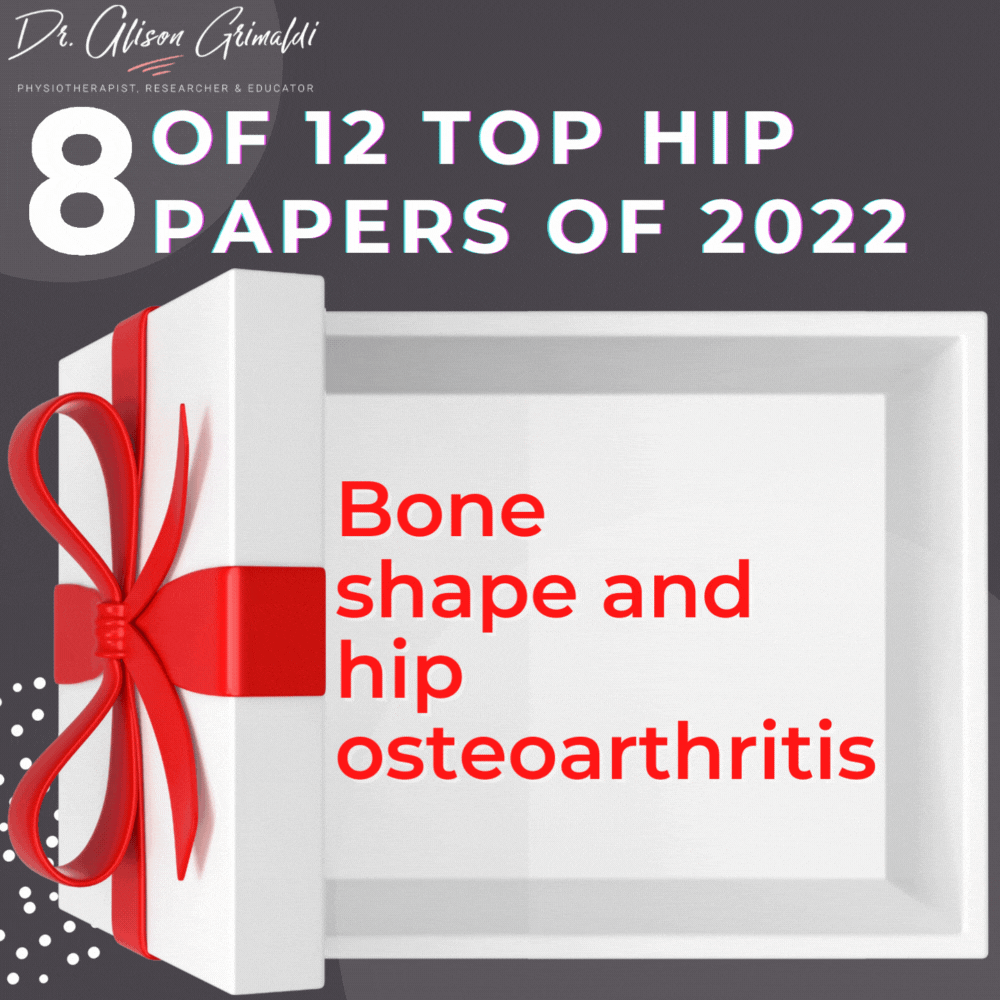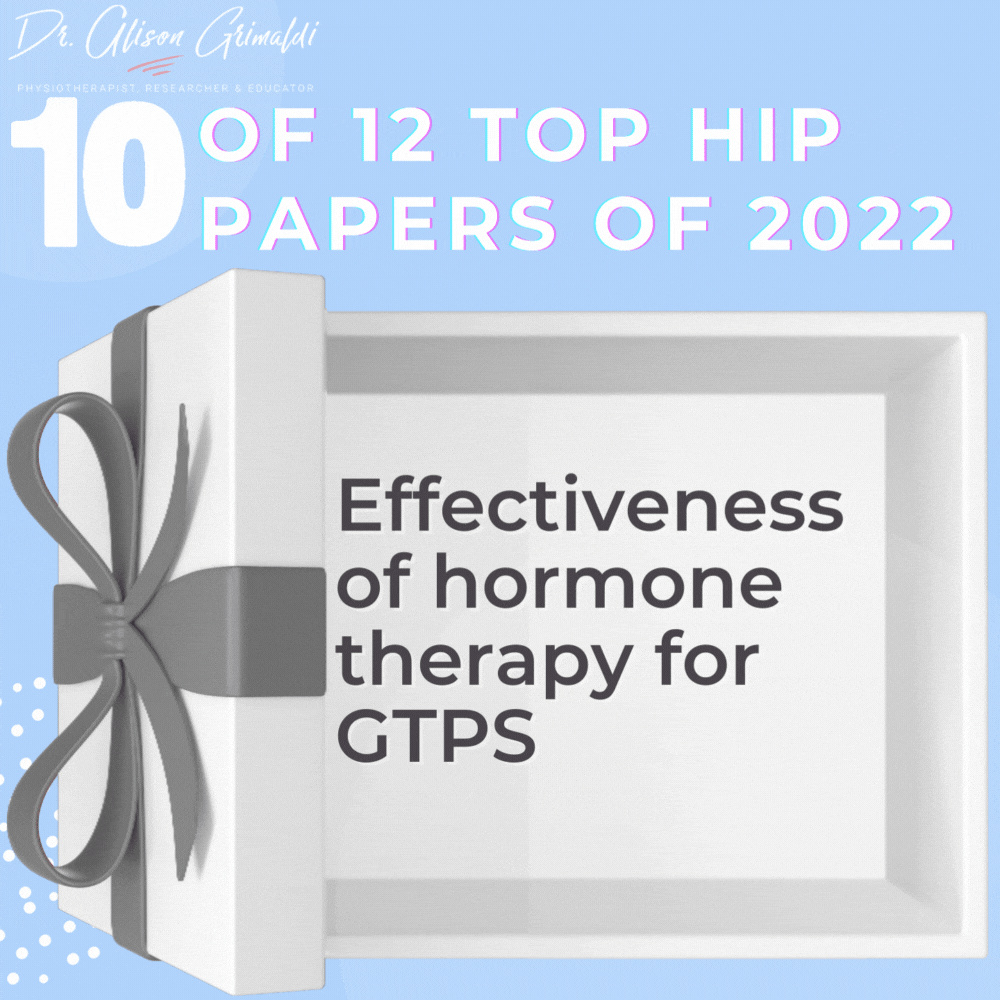9 of 12 Top Hip Papers of 2022 | Femoral retroversion and impingement location in FAI

Day 9 of my 12 Top Hip Papers of 2022 miniblog series, and still some great papers to come! Another paper looking at the impact of bone shape. You might note that there's a lot of interest currently in bony morphology, and that this year we've seen a lot more papers investigating the influence of femoral malversion - something that has so far been underappreciated. Today we'll be examining a paper who's authors wondered whether femoral retroversion and impingement location in FAI were related. Lucky for us, they researched this question and provided us with the answer. See their findings below.
Discover our Anterior Hip & Groin Pain Course
If you enjoyed this blog, you might like to take the online course on Anterior Hip & Groin Pain - 5 hours of guided online video content. Better your skills and understanding of the anterior hip and groin and become equipped with the knowledge to administer clinical diagnostic tests and management strategies.

9 of 12 Top Hip Papers of 2022: Hip impingement location in maximal hip flexion in patients with FAI, with and without femoral retroversion
Femoroacetabular impingement (FAI) results in early bony impingement at end of range, particularly in hip flexion and internal rotation. FAI is generally attributed to cam, pincer or mixed morphology. Femoral retroversion also has the potential to impact on joint range and risk of early impingement, particularly in those with other bone-shape risk factors.
Those with combined femoral retroversion and FAI may have different patterns of intra-articular and extra-articular impingement, with potential to influence type and location of possible pathology, and management approach. Let's take a look at what these authors did, and what they found out about femoral retroversion and impingement location in FAI.
Study Aim:
To investigate the acetabular and femoral locations of intra- or extra-articular hip impingement in flexion in patients with FAI with and without femoral retroversion.
What was done:
- A retrospective dynamic imaging study including 84 hips (68 patients):
- 26 were the control group (asymptomatic hips without FAI and normal femoral version,
- 21 were symptomatic patients with anterior FAI and normal femoral version, and
- 37 were symptomatic patients with anterior FAI and femoral retroversion.
- The femoral version cutoffs used were:
- Normal femoral version: 10 - 25° of femoral anteversion
- Retroversion: less than 5°of femoral anteversion
- Imaging:
- CT images were used to create 3D models of 84 hips
- 3D collision detection software enabled prediction of individual hip ROM and acetabular and femoral impingement locations during end-range hip flexion
- Between-group comparisons were made to assess relationships between femoral retroversion and impingement location in FAI.
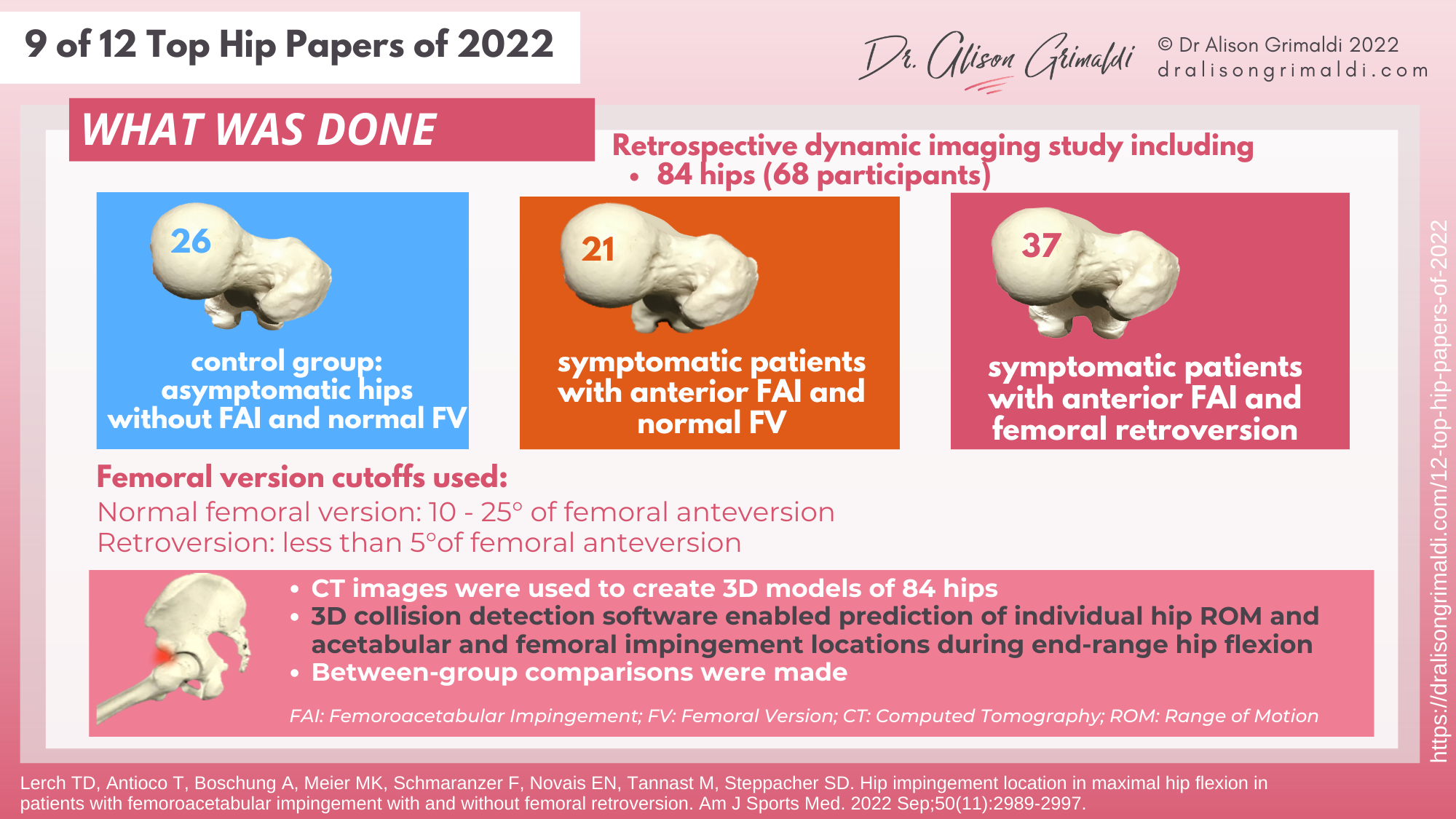
Key Findings:
This study showed that:
- the collision location was different for those with FAI and femoral retroversion
- compared to those with FAI and normal version, and
- compared to those with neither FAI nor retroversion,
- anterior intra-articular and extra-articular impingement in hip flexion is more common in those with femoral retroversion, and
- impingement occurs over a much wider region of the femoral head and pelvis in those with femoral retroversion.
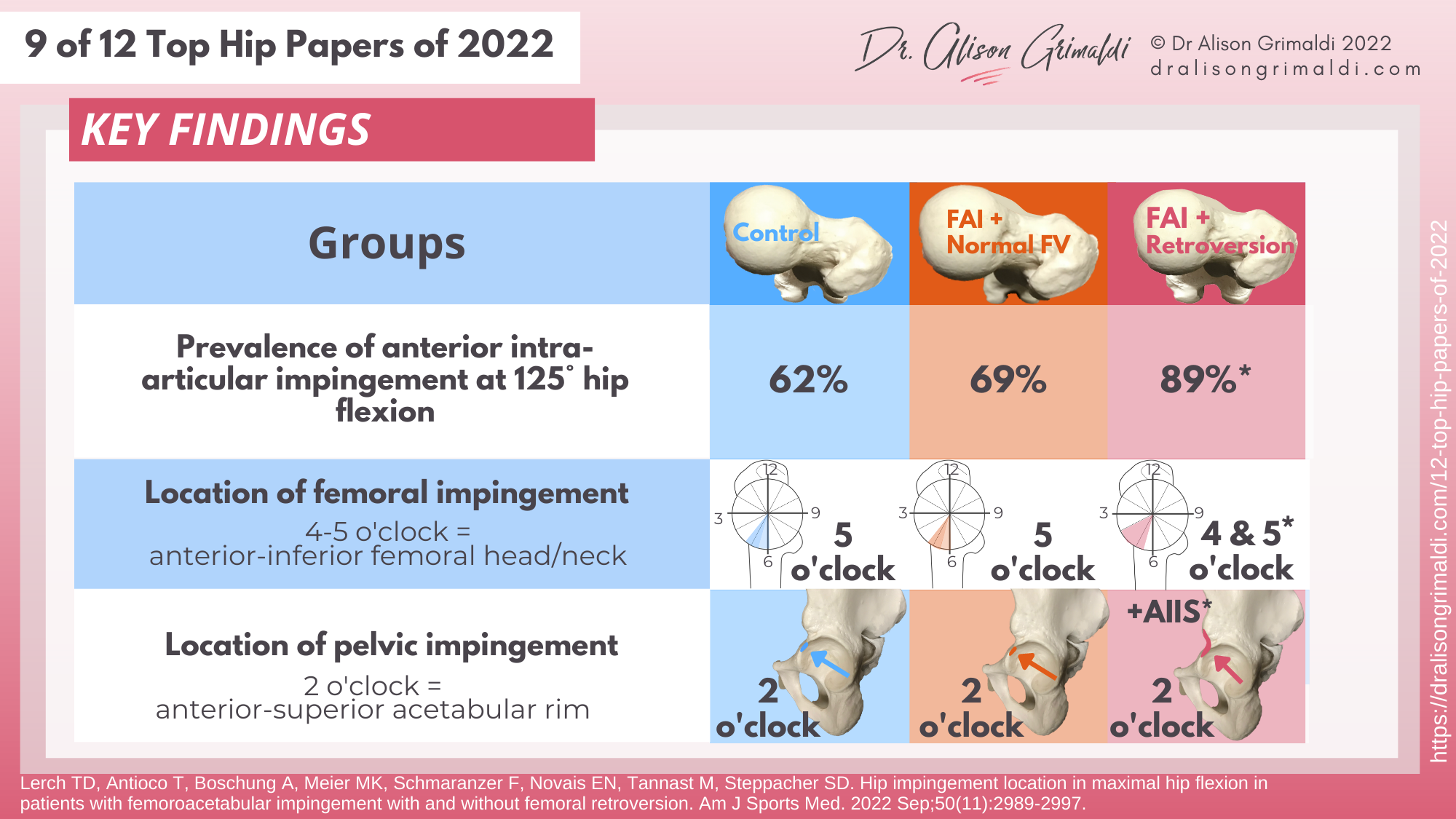
Clinical Implications:
This information is important in understanding pathoaetiology of impingement related pathology in people with different morphology, with implications for assessment and management strategies for patients with femoroacetabular impingement syndrome (painful FAI).
- Those who have both FAI and femoral retroversion are significantly more likely to experience intra-articular and extra-articular impingement in hip flexion, than others with or without FAI.
- Assessing femoral version will improve understanding of a patient's bony risk profile.
- Reducing or modifying deep hip flexion tasks will be particularly important for those with femoral retroversion.
- These findings also have implications for surgical approaches for FAIS.
Another great Anterior Hip Pain blog
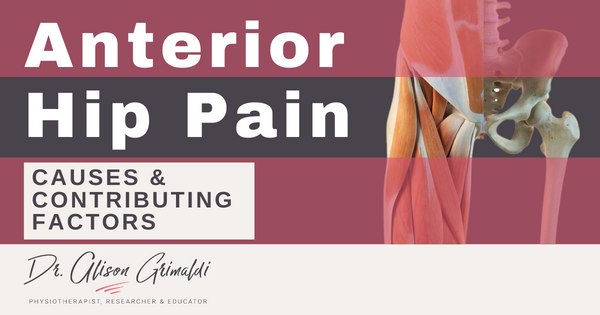
Anterior Hip Pain: Causes & Contributing Factors
Adequate consideration of individual causes and contributing factors is important for best outcomes.
Like to learn more about assessment and treatment of patients with Femoroacetabular Impingement Syndrome & Femoral Retroversion?
In this course, you can find detailed information on the influence of bone factors on hip joint health, and implications for assessment and management strategies for anterior hip pain associated with FAI, femoral malversion and many other conditions. Take the online course or join me for a workshop.
This online course is included in Hip Academy and Hip Academy members receive discounts for online workshops.
I hope you enjoyed the infographics and key learnings from Day 9 of my 12 Top Hip Papers of 2022. There are only 3 more papers to come, so stay tuned and return to the blog page each day to see what other top papers and infographics I have for you!
If you missed yesterday's Hip Paper, click the link below to catch up!

